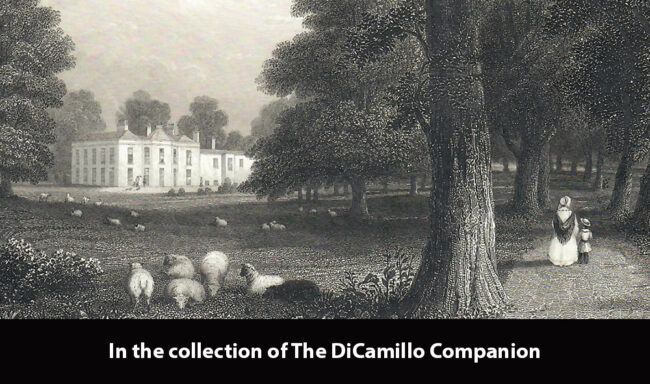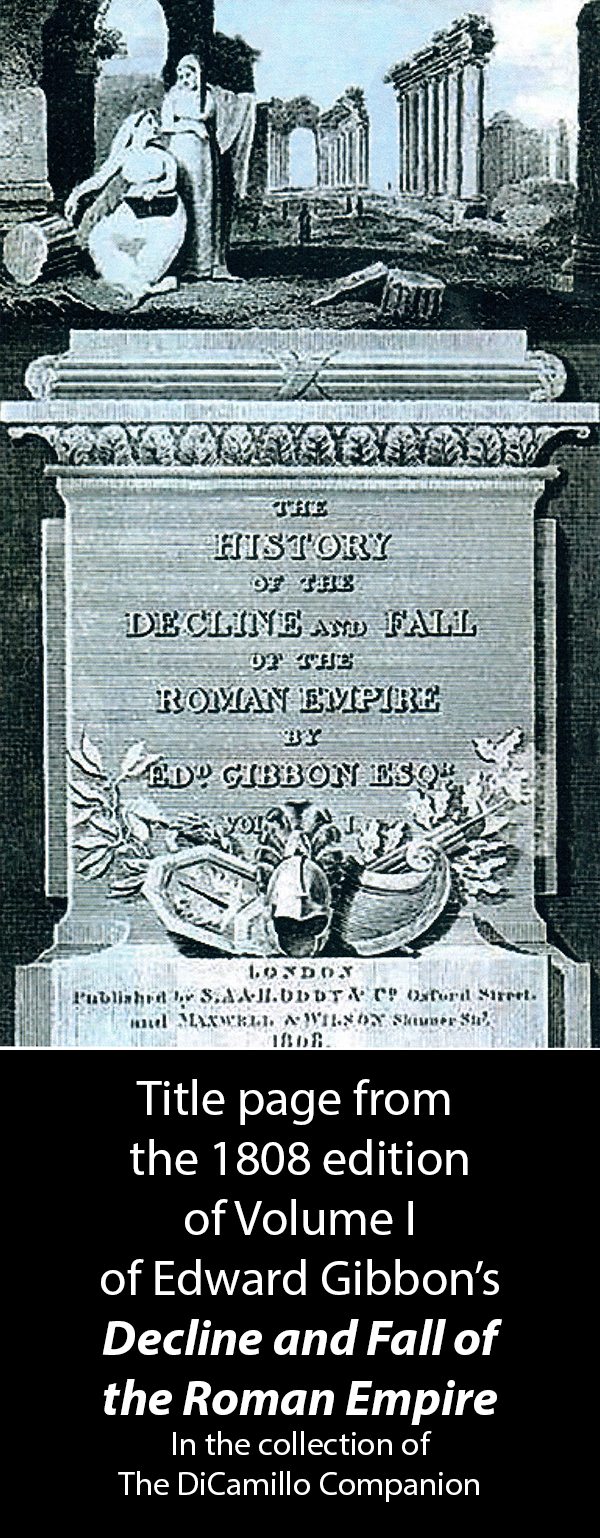
The entrance facade in 1810 from a hand-colored wood engraving that appeared circa 1870 in "Old and New London"

An 1843 engraving of the garden facade from "Brayley's History of Surrey"


An 1830 print of Edward Gibbon, probably the frontispiece from a 19th century edition of "The History of the Decline and Fall of the Roman Empire."

House & Family History: Though today in the Putney district of London, in the 18th century the country house called Lime Grove was the rural Surrey estate of the Gibbon family. It was in this family’s mansion, named for the grove of lime trees that formed an avenue to the house, that the important historian and essayist Edward Emily Gibbon was born in 1737. Gibbon, a son of the Enlightenment, is famous for his magisterial "The History of the Decline and Fall of the Roman Empire" (published in six volumes between 1776 and 1789), which posited that the Roman Empire fell because of its embrace of Christianity. Though this thesis is not widely accepted by scholars today, Gibbon’s work continues to be influential (the books are still in print), and his ideas and style have influenced generations of writers, from Evelyn Waugh to Isaac Asimov. Winston Churchill modeled much of his literary style on Gibbon. In his 1930 autobiography, "My Early Life," Churchill wrote: “I set out upon...Gibbon’s Decline and Fall of the Roman Empire [and] was immediately dominated both by the story and the style…I devoured Gibbon. I rode triumphantly through it from end to end and enjoyed it all.” Robert Wood purchased Lime Grove from Edward Emily Gibbon in 1770 and died here in 1771. Even though he lived here a very short time, it's interesting Lime Grove was purchased by a man who was also known for his writing on ancient history, specifically his influential books "The Ruins of Palmyra" (1753) and "The Ruins of Balbec" (1757).
Collections: After the death of Sir John St. Aubyn, 5th Bt., in 1839 his collection of paintings, drawings, and prints were sold by Phillips in April and May of 1840. After his widow's death in 1856, further contents were sold by Winstanley's at Lime Grove in July and August of 1856.
House Listed: Demolished
Park Listed: Not Listed
Past Seat / Home of: Sir John Lawrence, 1656-92. John Pettiward, 1711-14. Edward Gibbon I, 1714-37; Edward Gibbon II, 1737-70; Edward Emily Gibbon, 1770. Robert Wood, 1770-71; Wood family here until circa 1793. Sir John St. Aubyn, 5th Bt., 1838-39; St. Aubyn family here until 1856.
Current Ownership Type: Demolished
Primary Current Ownership Use: Demolished
House Open to Public: No
Historic Houses Member: No